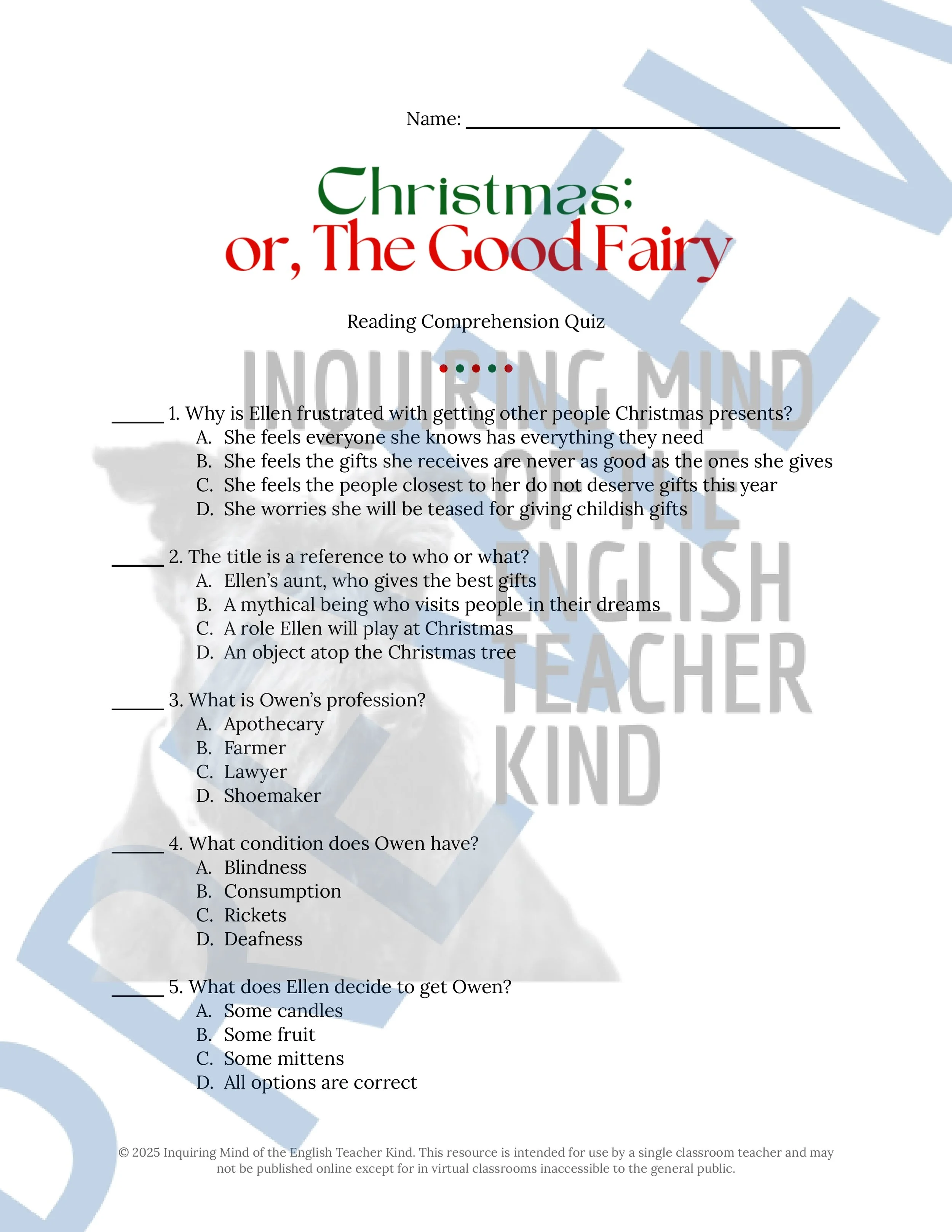 Image 1 of 16
Image 1 of 16

 Image 2 of 16
Image 2 of 16

 Image 3 of 16
Image 3 of 16

 Image 4 of 16
Image 4 of 16

 Image 5 of 16
Image 5 of 16

 Image 6 of 16
Image 6 of 16

 Image 7 of 16
Image 7 of 16

 Image 8 of 16
Image 8 of 16

 Image 9 of 16
Image 9 of 16

 Image 10 of 16
Image 10 of 16

 Image 11 of 16
Image 11 of 16

 Image 12 of 16
Image 12 of 16

 Image 13 of 16
Image 13 of 16

 Image 14 of 16
Image 14 of 16

 Image 15 of 16
Image 15 of 16

 Image 16 of 16
Image 16 of 16

















"The Gift of the Magi" by O. Henry Quiz, Literary Analysis Worksheet, and Vocabulary Games
Evaluate general reading comprehension, facilitate vocabulary development, and sharpen critical thinking skills with this bundle of materials for teaching O. Henry's Christmas-themed short story "The Gift of the Magi." A plot-based quiz, close reading analysis worksheet, vocabulary application activity, crossword puzzle, word search game, and answer keys are provided. Materials are delivered in editable Word Document and printable PDF formats. (Alternatively, a Google Drive option is available.) By engaging with these materials, students will:
Identify what the text states explicitly and implicitly
Define words and phrases as they are used in the text
Consult reference materials in order to learn and verify word meanings
Choose the most proper application of words as they are used in sentences
Explore how the author's narrative techniques shape the readers' understanding of the story
Consider tone in context
Examine how complex characters think, behave, interact, and develop
Apply knowledge of various literary devices including onomatopoeia, hyperbole, foreshadowing, paradox, and eye dialect
Isolate examples of sexist stereotypes throughout the story
Argue whether the author's stylistic choice to capitalize a common noun (Combs) is acceptable
Conduct brief online research in order to answer questions as needed
Choose a relevant theme in the context of a given excerpt
Support claims and inferences with sound reasoning and relevant evidence
Write about literature with clarity, accuracy, and precision
Many resources for teaching stories of irony are available:
Evaluate general reading comprehension, facilitate vocabulary development, and sharpen critical thinking skills with this bundle of materials for teaching O. Henry's Christmas-themed short story "The Gift of the Magi." A plot-based quiz, close reading analysis worksheet, vocabulary application activity, crossword puzzle, word search game, and answer keys are provided. Materials are delivered in editable Word Document and printable PDF formats. (Alternatively, a Google Drive option is available.) By engaging with these materials, students will:
Identify what the text states explicitly and implicitly
Define words and phrases as they are used in the text
Consult reference materials in order to learn and verify word meanings
Choose the most proper application of words as they are used in sentences
Explore how the author's narrative techniques shape the readers' understanding of the story
Consider tone in context
Examine how complex characters think, behave, interact, and develop
Apply knowledge of various literary devices including onomatopoeia, hyperbole, foreshadowing, paradox, and eye dialect
Isolate examples of sexist stereotypes throughout the story
Argue whether the author's stylistic choice to capitalize a common noun (Combs) is acceptable
Conduct brief online research in order to answer questions as needed
Choose a relevant theme in the context of a given excerpt
Support claims and inferences with sound reasoning and relevant evidence
Write about literature with clarity, accuracy, and precision
Many resources for teaching stories of irony are available:


Preview this resource:
Evaluate general reading comprehension, facilitate vocabulary development, and sharpen critical thinking skills with this bundle of materials for teaching O. Henry's Christmas-themed short story "The Gift of the Magi." A plot-based quiz, close reading analysis worksheet, vocabulary application activity, crossword puzzle, word search game, and answer keys are provided.










































































